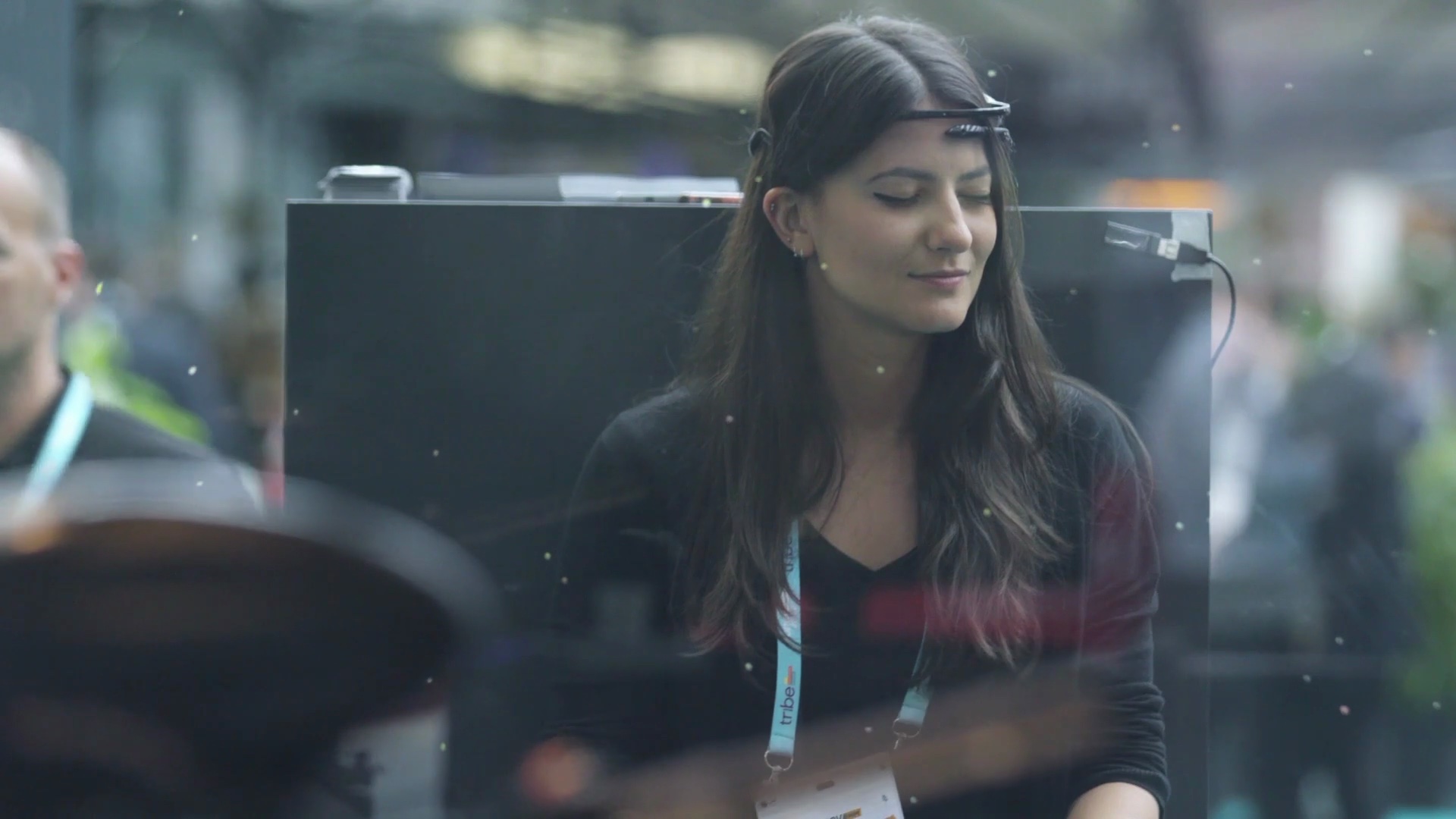Dutch Mind Masters
The world's first collaborative painting
created by the power of thought.
Together with Headcandy I helped develop a brand activation installation for Five°Degrees at a fintech trade show. The premise for both installations was that in fintech there is much technology but that the human factor will always remain crucial. The core concept revolved around the slogan “what great minds can do”, which created the conceptual foundation for an engaging activity based on a brain computer interface.
The first year we developed Mindset, a two-player race for slot cars based on mental concentration, using a custom Scalextric race track. This was a resounding success on the trade show floor and we were invited again to expand on the idea. This became Dutch Mind Masters, a concept by And Now This agency for creating the world’s first abstract painting created by the power of thought.
Client
Five°Degrees, via Headcandy and And Now This agency
Collaborators
Willem Vooijs (digital fabrication)
Five°Degrees, via Headcandy and And Now This agency
Collaborators
Willem Vooijs (digital fabrication)
My role
Technical lead, electronics, programming
Technologies used
Technical lead, electronics, programming
Technologies used
-
Arduino - interfacing with the stepper-motor controlled turret
- Emotiv - Brain Computer Interface (BCI) through JSON API
- NodeJS - HTML5/CSS, Javascript - interfacing with Emotiv headset & web frontend for session control
For Dutch Mind Masters we were tasked with creating the possibility to create an abstract painting. Departing from a semi-professional paintball gun, we made it remotely triggerable and fabricated a custom turret for it driven by stepper motors. In essence the turret was a form of x/y translation with endstops much like a CNC machine or a 3d printer.
The visitors were asked to contribute their thoughts and concentration to the artwork. Only if they provided enough did their contribution get locked in. Doing this with your thoughts is like trying to find the resonance of a wine glass. We needed to provide this feedback to the visitor in real-time and decided to do this visually at the paintgun itself, strengthening the suggestion that the visitors’ thoughts were being sensed by the paintgun while also providing a focus point for their attention.
Working with brain computer interfaces is finnicky. The idea of mind control is romantic but needs thorough training per person to even remotely start becoming fine-grained. The participation at a trade show needed to be more spontaneous, so we worked towards finding a balance which retained an element of actual mind control which I really wanted to explore, but combined with a dash of theater to help things along. In the end it’s all about the experience.




Creating the electro-mechanical solution was a delightful process of tinkering, designing, iterating and finalising. The result was a slick, robust solution which appealed to many visitors.
There were numerous safety levels. The turret would detect anomalies and recalibrate when necessary, there was a master off-switch and the paintgun was also enclosed in a safe glass room allowing maximum observability while being completely safe to the visitors. Naturally, the thrill of danger contributed to an exciting experience for the visitor.



